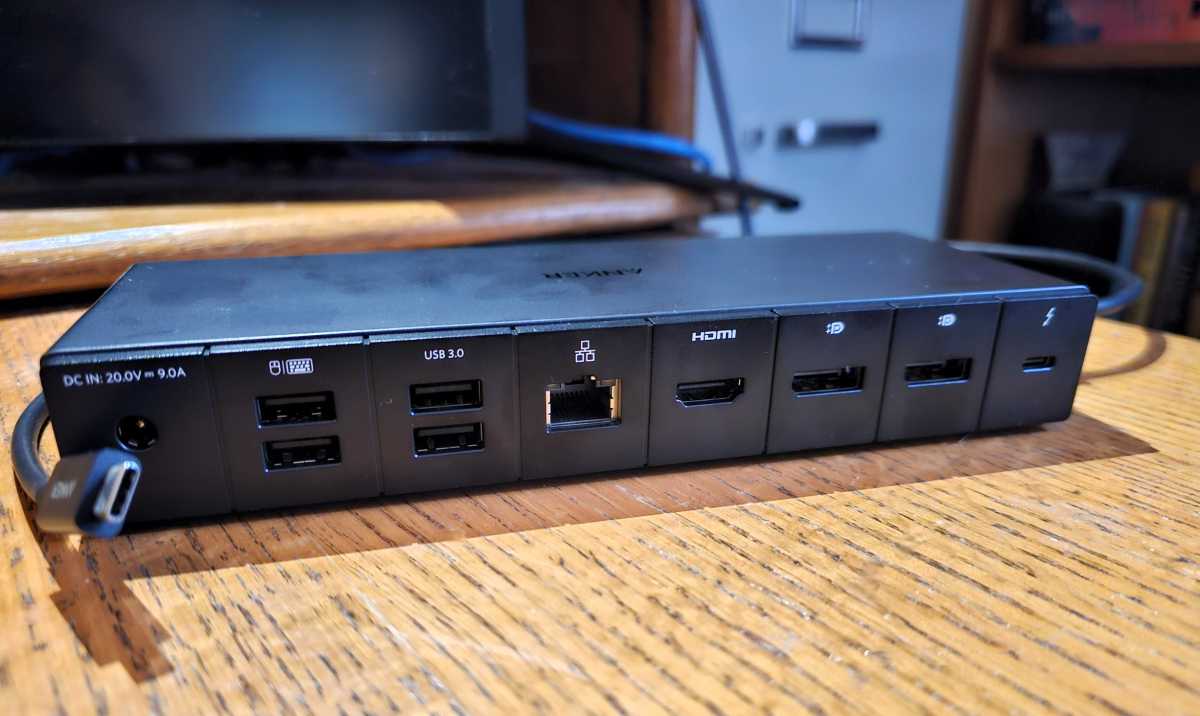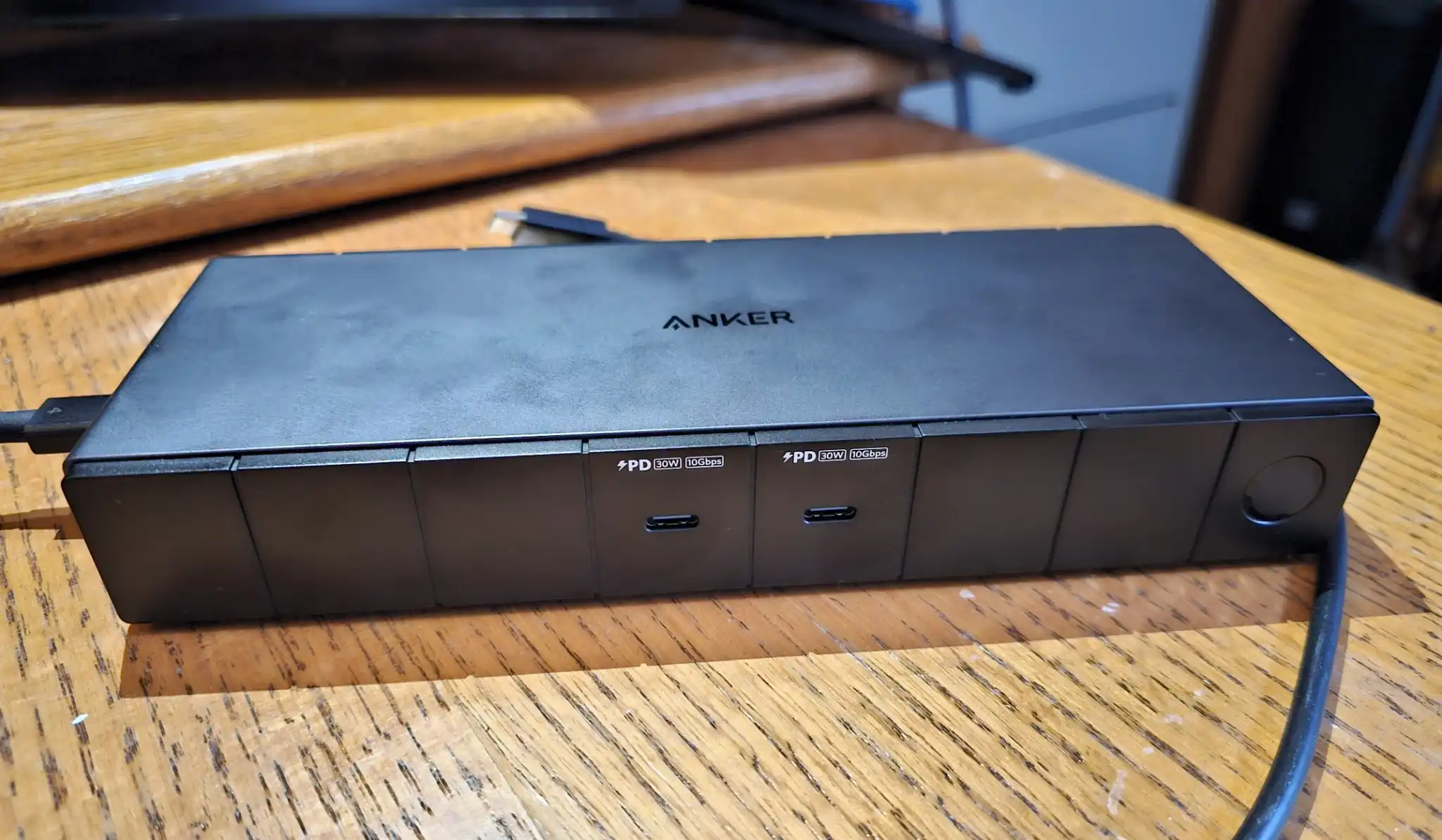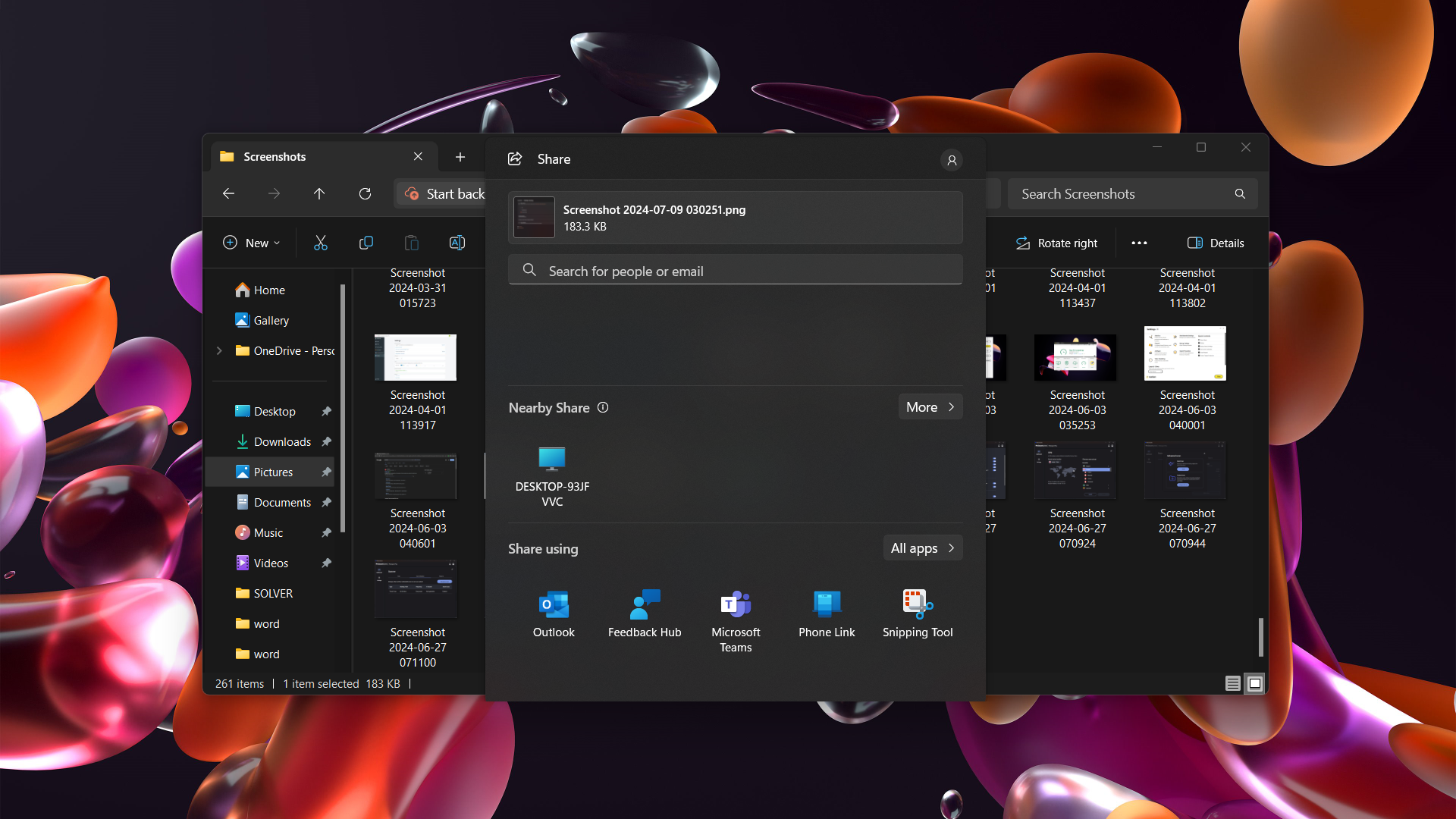Anker’s 778 12-in-1 Thunderbolt 4 laptop docking station is superb, with a solid feature set minus a couple of puzzling omissions. It’s simply overpriced.
Our sister site, TechAdvisor, has previously reviewed the Anker 778 12-in-1 Thunderbolt 4 docking station. Now it’s moved to the front of my testing queue, too, where I can take a fresh look. As the name suggests, this dock is similar to the Anker 777, a $299 Thunderbolt 4 dock that I was less impressed with.
On paper, the 778 is about as flexible a dock as you might like. With a dedicated Thunderbolt 4 (USB-C) upstream port, DisplayPort as well as HDMI, chances are that you can connect to an external display or two without the need for an adapter. In fact, if you use the Thunderbolt port as well as two of the other ports, Anker says you’ll be able to connect up to three 4K displays. Four displays is also possible, though with limitations.
Even though Thunderbolt 5 should be a 2024-2025 product, the lack of virtually any laptops or docking stations that support the technology makes Thunderbolt 3 and 4 still viable. (One customer on Amazon complained that this dock didn’t work with her Thunderbolt 3 laptop.) In fact, if you don’t really care about running a 4K display at 144Hz, as Thunderbolt 5 allows, this dock will be just fine. It’s just a pricy solution.

Mark Hachman / IDG
There are a couple of features that I’ve always liked about Anker’s docks: The charging ports on the front of the dock are labeled — in this case, two 10Gbps USB-C ports supplying a rated 30W each. I’ve also liked the fact that Anker indicates which ports are which — USB-A ports can be tricky. I wish Anker would have labeled its two “USB 3.0” port on the back with a marker indicating its 5Gbps speed, but the other two USB-A ports at least have a “mouse and keyboard” icon over the top of them to indicate their legacy 480Mbps speeds.
Anker’s 778 12-in-1 docking station is excellent, and one I’d absolutely recommend buying if the price fell within the range other docks cost. As it is, Anker charges way too much, even as good as it is.
To reiterate, this dock includes two 10Gbps USB-C charging ports (30W) on the front. On the side, Anker includes a somewhat short charging cord, about 27 inches. On the rear, Anker’s dock includes a Thunderbolt 4 upstream port, two DisplayPort 1.4 ports, an HDMI 2.1 port, gigabit Ethernet, and four USB-A ports (two 480Mbps, and two 5Gbps). A Kensington lock slot is tucked into the other side.
The only two notable omissions? A headphone jack and SD/microSD card slots. I think the latter is of less concern, save for photographers. A headphone jack is optional, especially if you already have a laptop in front of you. But it’s a nice feature whose absence feels a bit out of place.
The dock is made out of what appears to be plastic, and it will warm up a bit more than a dock made of metal. It’s rather long at about 8 inches across, and 3 inches deep and an inch high.

Mark Hachman / IDG
Anker is one of the few dock makers that offers a downloadable utility, through which you can update the device firmware. There was an update waiting for me, which promised to clear out a few random bugs. It’s worth noting that even after updating the firmware there were a lot of on-again, off-again disconnections from my connected monitors; if this happens, simply restart your computer. The dock became absolutely stable after that.
The Anker 778’s performance is mostly solid
Anker allows you to connect two 4K displays at 60Hz via either the HDMI or DisplayPort ports, plus a third 4K display at 60Hz if you connect it to the Thunderbolt port. If you use all four ports (two DisplayPort, HDMI, plus Thunderbolt), Anker says you can connect four 4K displays. Only one will light up at 60Hz, however; the others will use a 30Hz refresh rate instead.
You may struggle to get this dock to connect to multiple displays. As a “generic” Thunderbolt 4 dock, connecting to two 4K60 displays, this dock works perfectly well. But adding a third display required downloading the Anker software, rebooting, and fiddling with the display configurator within the Windows settings menu.
I typically use a variety of laptops to test docks. In general, more modern hardware is more compatible with a modern dock like the Anker 778, and most laptops with a 12th- or 13th-gen Intel Core chip seemed to do well connecting to the dock, after I downloaded the utility software and rebooted.

Mark Hachman / IDG
You may have a less satisfactory time with some of the power-sipping laptops that have shipped recently; Microsoft’s Surface Laptop with a Qualcomm Snapdragon X Elite chip only “saw” two displays. An Asus VivoBook with Intel’s Lunar Lake/Core Ultra 200-series chip would only connect to three displays, period — if I tried to connect it to three external displays, the laptop’s own display shut off. That’s not the way it’s supposed to work!
With two 4K displays, this dock was absolutely solid, stability-wise. When I connected three, I felt less certain that the average user would have a good experience, especially with variations in hardware. Four seems like a bridge too far for most setups.
Anker’s docks (like the Anker 568 we reviewed last year) have always performed excellently in terms of charging power, and the Anker 778 is no exception. The front charging ports, rated at 30W, still deliver 26W by my measurements, which pushes into fast-charging territory for a smartphone. Traditionally, the upstream Thunderbolt port can double as a charging port. Don’t bother with the USB-A ports, except for bus-powered devices under 5W.
The dock itself is rated for 100W power delivery. I usually take a laptop and run a game to push its power draw. On one laptop, power surged to over its rated 100W, which I’ve never seen before — it touched 102W a few times. On another laptop, the power draw was rock-solid at 87W. Either way, the Anker 778 delivers the power your laptop needs, consistently.
Anker’s dock doesn’t suffer in the performance category, either. The dock didn’t drop a single frame while playing back a 4K, 60Hz video. My storage tests were maybe a tad low: 126.8MBps, as opposed to the 130- to 132MBps I usually see. (For more, see how I test Thunderbolt docks at PCWorld.) That dropped to 126MBps when I streamed the video at the same time. My file-copy test completed in one minute, five seconds — again, quite normal.
Should you buy the Anker 778?
I would absolutely buy this docking station. But I would absolutely not spend what Amazon, Anker, and other retailers are asking for it. Too many of our best Thunderbolt docks hover at or around $250, and this goes way above that. Ironically, many vendors on eBay have adopted that price point (or lower) in selling the 778. If you don’t mind buying through eBay, go for it. Otherwise, I’d opt for the Anker 568 instead.
The lack of an SD card slot and headphone jack isn’t a dealbreaker. I’m surprised, however, that Anker hasn’t lowered the overall price to attract more business. This is a premium dock of premium quality, but at an ultra-premium price that you might not be willing to pay.





